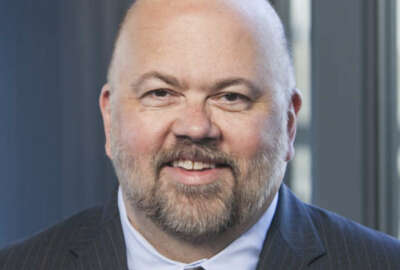

Federal workers (both as employees and as taxpayers) have a major investment, not to mention mixed emotions, about contractors, says Senior Correspondent Mike C...
How many private contractors does Uncle Sam have?
Depending on who’s doing the estimate, the number of contractors range from several million to as many as 16 million. By contrast, the number of federal civil servants, including the U.S. Postal Service, has remained constant — at around 2.5 million to 2.6 million for years. But however many contractors experts identify, all agree that the numbers have been going up, from the time outgoing President Dwight D. Eisenhower made his famous warning speech about the “military-industrial complex” to Congress, and the public. President Bill Clinton’s massive downsizing of the government’s civilian workforce resulted in contractors taking over many functions once performed by government employees. The 9/11 attacks and the wars in Iraq and Afghanistan greatly increased the government’s reliance on contractors. It’s the number of contractors that is elusive, yet sort of important, especially during a government hiring freeze and pending overhaul.
In 2006, The Washington Post quoted Dr. Paul Light, an NYU expert on government operations, as saying that the “true size” of the government was a lot bigger than most people think. That number, which includes civil servants, military personnel and contractors, was 14.6 million. At that time. Light said that four years earlier, in 2002, the number was 12.1 million. With contractors being the lion’s share of that number.
In 2010, The Post reported that the Homeland Security Department said it had more private contractors than civil servants on the payroll. DHS was created by merging a number of agencies after the 9/11 attacks on New York City and the Pentagon. The paper said DHS officials told Senate staffers that they had 200,000 contractors and 188,000 federal employees. Light, a scholar at the Brookings Institution, disputed the number of contractors at DHS. “I think it’s a larger number,” he told the Post, “when you start counting the subcontractors and the state and local employees who are working under grants and contracts” paid for by the government.
Federal workers (both as employees and as taxpayers) have a major investment, not to mention mixed emotions about contractors. And about contract employees doing work that is considered “inherently governmental.” Many feds think contractors get big bucks and bonuses for doing essentially the same things they do. Some contractors counter that feds are employed-for-life, then retired with inflation-indexed pensions. Both sides make a case (at times) that the other guy has got it made.
Jeff Neal, who was the chief human capital officer for the DHS during the Obama administration, says it’s hard to pin down the number of contractors. But in a recent column for Federal News Radio, he did say this is what we do know:
In yesterday’s Federal Report column, we actually got the official headcount of federal employees over the years. Far from bursting at the seams with bureaucrats, the number of federal civil servants has remained constant for decades.
That column prompted this response from a reader:
”Your article of 2 Feb was kind of misleading. While it is true that the number of federal employees has remained fairly constant, the number of contractors performing the same functions has increased dramatically. Where a government office in the ’60s or ’70s may have had 10 people working in it (all feds), that same office today may have 15 or 20 people, 10 feds and five or 10 contractors (thus the appearance of the bloated bureaucracy). While the mission for said office may or may not have changed, the increased demand for whatever service/function this office provides has increased, which caused the increase in personnel requirements. Whether the cause of the increased demand be from increased population or increased regulation or congressional mandate, the reality is that it takes ‘X’ number of people to perform the function. This is why the President’s executive order seems to apply to both feds and contractors. What really needs to be done is an examination of each office’s mission and a realistic assessment of how many bodies it takes to accomplish that mission. This would be a long process as workers would likely spend hours justifying their jobs, hours that could not be spent on mission work. Unfortunately, both Congress and the President want to use an ax to do a surgeon’s task. The President wants to beef up the military — great, I’m all for it. But don’t impose hiring freezes on the mostly civilian workforce that develops, procures, fields and, in some cases, maintains the equipment that our fine fighting men and women need and rely on. The same philosophy applies to the agencies that keep us all safe, their ability to fulfill that function must not be hindered.” — M.G.
Soft cheeses are unripened cheeses made by coagulating milk proteins, or casein, with acid. By comparison, you ripen or age hard cheeses by coagulating milk proteins with enzymes (rennet) and culture acids. The hard cheeses are ripened by bacteria or mold, which makes them drier and harder.
Source: Shelf Life Advice
Copyright © 2024 Federal News Network. All rights reserved. This website is not intended for users located within the European Economic Area.
Mike Causey is senior correspondent for Federal News Network and writes his daily Federal Report column on federal employees’ pay, benefits and retirement.
Follow @mcauseyWFED

